Bald Eagles of Broward County, Florida
›
CURRENT (2019-Present) Observations of Pembroke Pines Bald Eagle Nest BO-002
MARCH 7: Eaglet may have hatched
|
Administrator
|
Arrived at nest 7:30 AM (Sunday, March 7). An adult was deep in the nest. The sky was gray and gusts of northerly winds caused the nest tree to sway considerably. The high winds and driving rain which accompanied the cold front the afternoon before did not cause any visible damage.
The estimated hatch day for the first egg was March 8th, based upon ground observations of of changes in behavior between January 28 and February 1. Luis saw the female moving about as if tending to a hatchling and believed that an eaglet may have arrived yesterday (March 6). As I watched the nest I saw the adult rise up and indeed its head movements suggested that this may be the case. We would expect her to be "tenting" a bit higher in the nest to shelter the eaglet and also continue to incubate the remaining egg(s). However it is very difficult to see activities in the nest. Within an hour the clouds disappeared and the sky was blue.  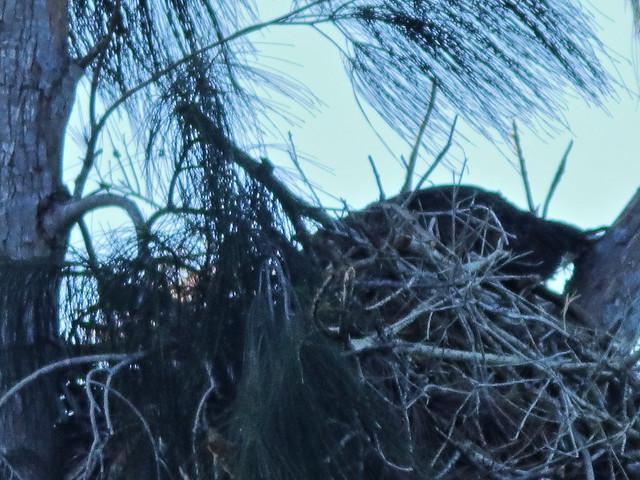 The male (Pride) flew in at 8:20 AM and roosted in the tree on the corner of 208th and Pines:  He flew to the nest and exchanged incubation duties, as almost immediately the female (Jewel) flew into one of the favored perches in the same tree:  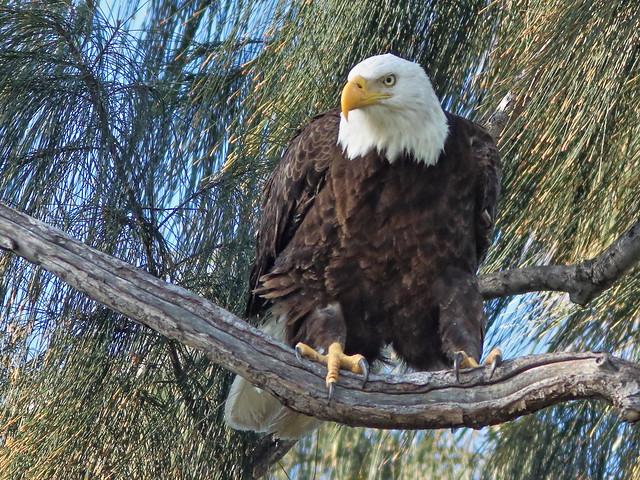 Jewel flew off and disappeared to the southwest at 8:35 AM:   She reappeared unexpectedly from the east in about 5 minutes, and spent quite a while preening:   Jewel flapped her wings to keep her balance as she scratched her chin: 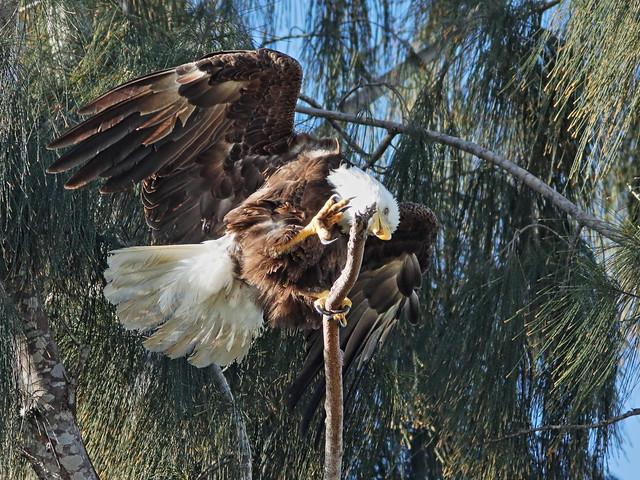 Then she started calling... 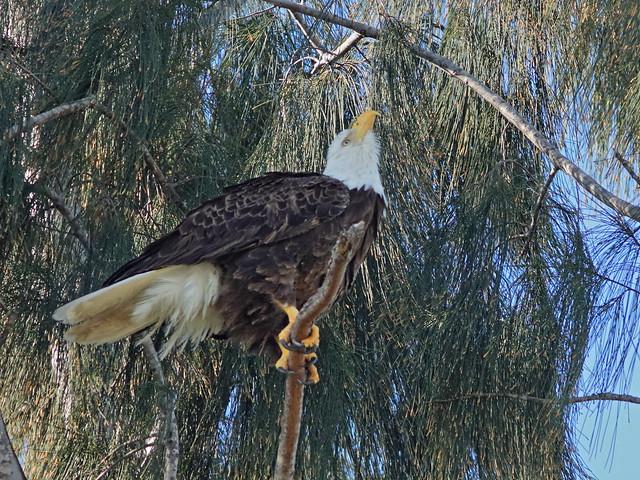 ...and promptly dropped down to grasp an outer branch of the Australian Pine:  She attempted to break off a green twig...  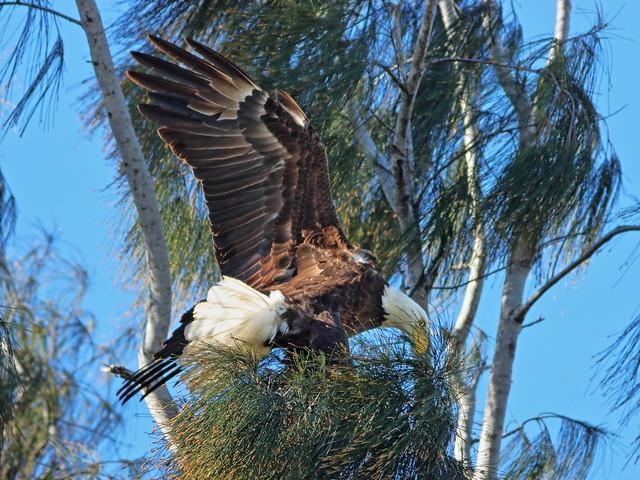 ...and succeeded!  As soon as Jewel launched she transferred the leafy* clump to her talons...   ...and flew to deposit it on the nest:  Just as I was leaving at 9:00 AM, Jewel flew off to gather more greeney. Luis reported that both eagles were bringing in green branches. We have seen this happen more often when there are eaglets in the nest. They may serve as an insect repellant. 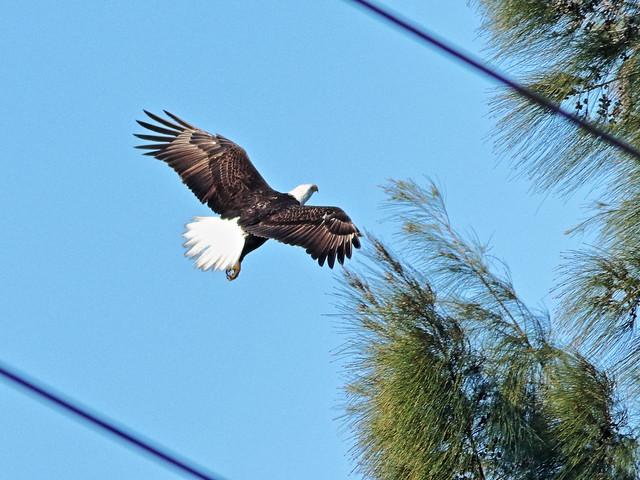 * Australian Pine seeds look like small pine cones but they are not true pines and do not have needles-- they are actually thin branches covered by tiny scaly leaves.
Ken Schneider
Web site: http://rosyfinch.com Blog: http://rosy-finch.blogspot.com Photos: <http://flickr.com/photos/rosyfinch> |
«
Return to CURRENT (2019-Present) Observations of Pembroke Pines Bald Eagle Nest BO-002
|
1 view|%1 views
| Free forum by Nabble | Edit this page |

